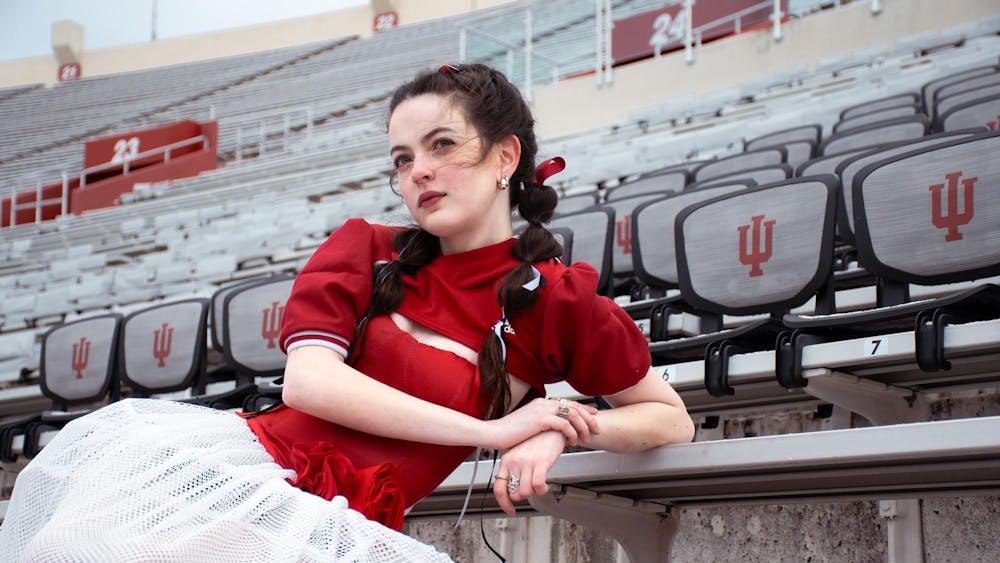Professor Kathleen Linnix hunches over a fragile manuscript propped up on a foam wedge, observing it closely and scribbling extensive notes on index cards. The chair next to her has a cardboard box filled with only a tiny fraction of the 30,000 papers written by Hannah Whitall Smith, a Quaker Evangelist. Linnix traveled to Bloomington from Emory University in Atlanta to study a collection of her manuscripts matched only by those in the Library of Congress.\nThe Lilly Library is home to more than 6.5 million manuscripts, 400,000 books, 100,000 sheets of music and the sizable Lilly Endowment that allows them to buy many more.\nIt was designed to house a collection of rare and priceless documents, many of them donated by Josiah Kirby or J.K. Lilly Jr., the grandson of Indiana pharmaceutical mogul Eli Lilly.\n"He was a quiet collector," librarian Susan Presnel said. "Very meticulous. He always wanted the best of everything."\nThe "best" is what has made the Lilly Library virtually unmatched by any other rare books library in the state.\nRobert Miller, a previous director of the library, had noted "…the reputation of a library is made largely in terms of its special collections."\nThe collections at the Lilly include a portrait gallery, children's books, miniature books, early printings and music and literature on medicine, science and religion.\nEvery three or four months, the library has special exhibits on topics like the Beat Generation (1960s), "The Wizard of Oz," Edgar Allen Poe, Patriotic Songs, Sylvia Plath, American Poetry and 500 Years of Music.\nThe current exhibit in the lobby has many books with worn leather bindings and yellowing manuscripts with russett edges that look as though someone took a lighter and smoked them.\nTo accommodate all of these documents, the building has seven floors -- all humidity and climate controlled. Windows have a UV protection layer to prevent sun damage.\nThe Secure Area on the sixth floor of the Main Library -- a sort of mini-Lilly -- also takes extra care with its collection, which contains books commonly destroyed, stolen or defaced. This section includes very small, fragile, valuable, sexually explicit or true crime books. The room is locked. Only supervisors have access to it, but they can get any materials from the area for students.\n"The secure area is a lot more accessible to students than the Lilly Library. But they've done a lot to make it more user-friendly," said Patricia Steele, Head of Customer and Access Services.\nWhile the Lilly Library is trying to be user-friendly, security is still tight. One has to register and show a photo ID at the front desk, stash his or her bag in a locker and is only allowed to go in the reading room with a pencil (no pens) and paper. The librarian writes down any items brought in.\nThe librarians retrieve requested materials, all of which can be located in either the card catalogue or IUCAT, the IU libraries' online directory. The room is locked so no one can leave until the librarian checks their materials. Librarians also double-check the call number now because of one security breach they had awhile ago, when someone switched the binding and made off with a book.\nWearing gloves is required when handling photographs because the oil on one's hands can eat away at a picture. Gloves are not required for regular paper because struggling with turning the pages tears it faster.\nThese are not unfounded or excessive precautions -- security measures have to be extensive because the Lilly is home to so many rare and valuable books. The library owns the first copy of the Declaration of Independence, and that alone is worth $8.5 million.\nWhile many people have donated their collections, no one has contributed as much as J.K. Lilly. When he signed his collection over to IU, his only request was that he get no publicity and the gift be attributed to "an Indiana collector who prefers to remain anonymous."\nThis would later become a moot point during the dedication ceremony of the Lilly Library, which he did attend. A portrait of him also hangs in the front entrance, along with a brief biography and a big thank you.
Reading between the lines
A closer look at accessing rare works at IU's Main and Lilly libraries
Get stories like this in your inbox
Subscribe





